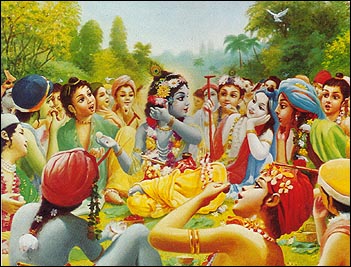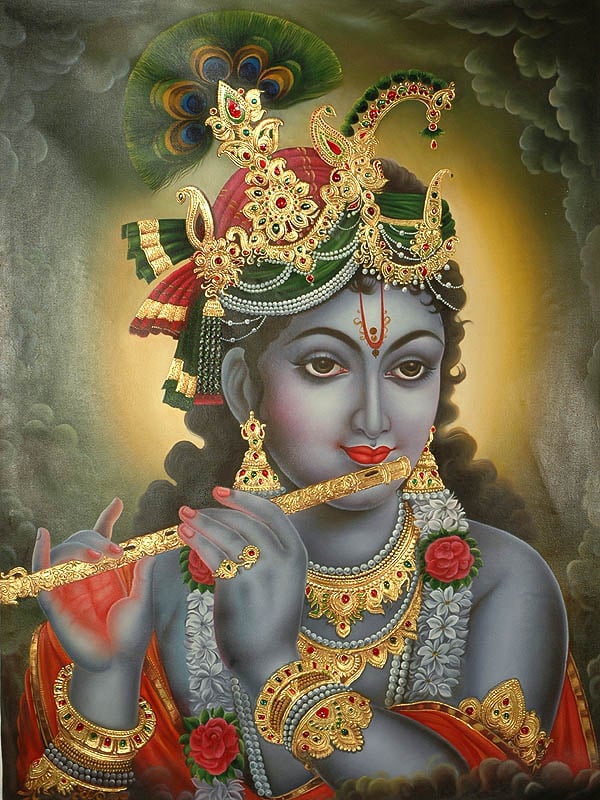Often, Krishna is pictured with his gopi-consort Radha. Manipuri Vaishnavas do not worship Krishna alone, but as Radha Krishna, a combined image of Krishna and Radha. This is also a characteristic of the schools Rudra and Nimbarka sampradaya, as well as that of Swaminarayan faith. The traditions celebrate Radha Ramana murti, who is viewed by Gaudiyas as a form of Radha Krishna.
The most exalted figures in Jainism are the twenty-four Tirthankaras. Krishna, when he was incorporated into the Jain list of heroic figures presented a problem with his activities which are not pacifist or non-violent. The concept of Baladeva, Vasudeva and Prati-Vasudeva was used to solve it. The Jain list of sixty-three Shalakapurshas or notable figures includes amongst others, the twenty-four Tirthankaras and nine sets of this triad. One of these triads is Krishna as the Vasudeva, Balarama as the Baladeva and Jarasandha as the Prati-Vasudeva. He was a cousin of the twenty-second Tirthankara, Neminatha. The stories of these triads can be found in the Harivamsha of Jinasena (not be confused with its namesake, the addendum to Mahābhārata) and the Trishashti-shalakapurusha-charita of Hemachandra.
While discussing the origin of Indian theatre, Horwitz talks about the mention of the Krishna story in Patanjali's Mahabhashya (c. 150 BC), where the episodes of slaying of Kamsa (Kamsa Vadha) and "Binding of the heaven storming titan" (Bali Bandha) are described. Bhasa's Balacharitam and Dutavakyam (c. 400 BC) are the only Sanskrit plays centered on Krishna written by a major classical dramatist. The former dwells only on his childhood exploits and the latter is a one-act play based on a single episode from the Mahābhārata when Krishna tries to make peace between the warring cousins.
Since Vasudeva believed Krishna's life was in danger, Krishna was secretly taken out of the prison cell to be raised by his foster parents, Yasoda and Nanda, in Gokula. Two of his other siblings also survived, Balarama (Devaki's seventh child, transferred to the womb of Rohini, Vasudeva's first wife) and Subhadra (daughter of Vasudeva and Rohini, born much later than Balarama and Krishna). According to Bhagavata Purana divine Krishna was born without a sexual union, but by divine "mental transmission" from the mind of Vasudeva into the womb of Devaki.
From the 10th century AD, with the growing bhakti movement, Krishna became a favorite subject of the arts. The songs of the Gita Govinda became popular across India, and had many imitations. The songs composed by the Bhakti poets added to the repository of both folk and classical singing.
Subscribe to:
Post Comments (Atom)




















No comments:
Post a Comment